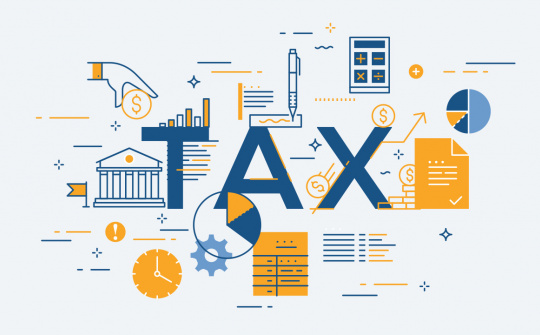
The planning scope of the Northern Midland and Mountainous Region includes the entire land territory of 14 provinces: Cao Bằng, Điện Biên, Bắc Giang, Bắc Kạn, Hà Giang, Hòa Bình, Lạng Sơn, Lai Châu, Lào Cai, Phú Thọ, Sơn La, Thái Nguyên, Tuyên Quang, and Yên Bái. The northern areas share borders with Guangxi and Yunnan provinces of China; the western share borders with the Lao People's Democratic Republic; and the eastern and southern share borders with the Red River Delta region and the North Central and Central Coastal regions.
By 2030, the Northern midland and mountainous set goals to be areas of green, inclusive, and sustainable growth, with a primary infrastructure framework connecting internally and with the Red River Delta region, Hanoi, and the North Central sub-region. The region will focus on the development of processing and manufacturing industries, energy, high-value agriculture, organic and specialty products, green and circular agriculture, cross-border trade, and tourism. There will be an emphasis on protecting and restoring forests, especially headwater forests; afforestation will be intensified, and sustainable forestry economics will be promoted. The efficient exploitation and use of natural resources and minerals, environmental protection, ecological security, and water resource security will be ensured. The cultural identity of ethnic groups will be preserved and promoted; the physical and spiritual well-being of the people will be improved and enhanced; and national defense and security will be firmly secured.
The aim is for the region to achieve upper-middle income status by 2030, with some provinces ranking among the more developed in the country, approaching high-income thresholds.
80% of communes recognized as new-style rural areas
The program is expected until 2030, for economic development: The average annual growth rate of Gross Regional Domestic Product (GRDP) in the period 2021 - 2030 reaches 8.5 - 9.0%; the regional economic development reaches about 2,100 trillion VND (current prices); the proportion of agriculture, forestry, and fisheries in GRDP accounts for about 12 - 13%, industry and construction account for 45 - 46%, and services account for 37 - 38%; per capita GRDP at current prices reaches over 140 million VND/person/year; total state budget revenue reaches about 190 trillion VND.
Regarding urban and rural development, by 2030, the Region will have an urbanization rate of about 40%; including 80% of communes recognized as new-style rural areas and 30% of communes meeting advanced standards; with each province having at least 3 district-level localities meeting new rural standards.
For social development, the Human Development Index (HDI) reaches over 0.75; the proportion semi-skilled labor reaches 65 - 70%; the proportion of skilled labor reaches 35 - 40%; the proportion of preschool children attending school is over 95% and mobilization rate of children to primary schools reaches 100%; the multidimensional poverty rate decreases by 2 - 3% per year (according to the poverty line of each period)...
For environmental protection, the region’s total covered area of forest remains about 54 - 55%; the urban population supplied with clean water through centralized water supply systems reaches 95 - 100%, and the rural population using clean water meeting standards is 93 - 95%; 95% of urban household wastewater is treated; 100% of industrial zones have centralized wastewater treatment systems meeting standards.
By 2030, the region will have a synchronized and modern infrastructure while completing expressway routes, prioritizing connectivity via expressways to the capital Hanoi, the Red River Delta region, the North Central Coast region, and with China, Laos. Accelerating the progress, preparing and commencing the construction of high-speed railway lines: Lang Son - Hanoi, Lao Cai - Hanoi - Hai Phong - Quang Ninh.
Electricity infrastructure and energy ensure sufficient supply for production and consumption needs; modern information and communication infrastructure meet the requirements of digital transformation, digital economic and social development. Completing irrigation, water supply, drainage infrastructure, and disaster prevention, adaptation to climate change.
Completing expressway routes, prioritizing connectivity with the capital Hanoi
The decision has clearly outlined the key tasks and breakthrough stages in the planning period as follows: The Region will focus on developing infrastructure, prioritizing developing traffic management systems connecting with the capital Hanoi, the Red River Delta region, the North Central Coast region, and with China, Laos. Accelerating the progress, preparing and commencing the construction of high-speed railway lines: Lang Son - Hanoi, Lao Cai - Hanoi - Hai Phong - Quang Ninh. Constructing and upgrading logistics infrastructure, infrastructure of cross-border economic zones, tourist areas, information and communication infrastructure, and digital economic infrastructure.
Focusing on developing economically dynamic areas, growth poles, essential economic corridors, and advantaged economic sectors. Developing industrial-urban-service belts, forming industry clusters, and product chains mainly located in Bac Giang - Thai Nguyen - Phu Tho - Hoa Binh; developing growth poles of the region in Thai Nguyen, Bac Giang, Lao Cai, Son La, Lang Son, Phu Tho. Concentrating on developing agricultural product chains, distinctive tourism, and border economy.
In addition, improving the quality of the workforce, especially vocational education for ethnic minorities, meeting the needs of each sub-region, each area; focusing on attracting and utilizing the workforce, especially skilled labor locally.
Enhancing intra-regional, interregional, and international cooperation. Implementing pilot models, mechanisms, policies, and specificities in regional development, especially for areas, regions playing important roles in forest protection, border security, water security, and energy security…





